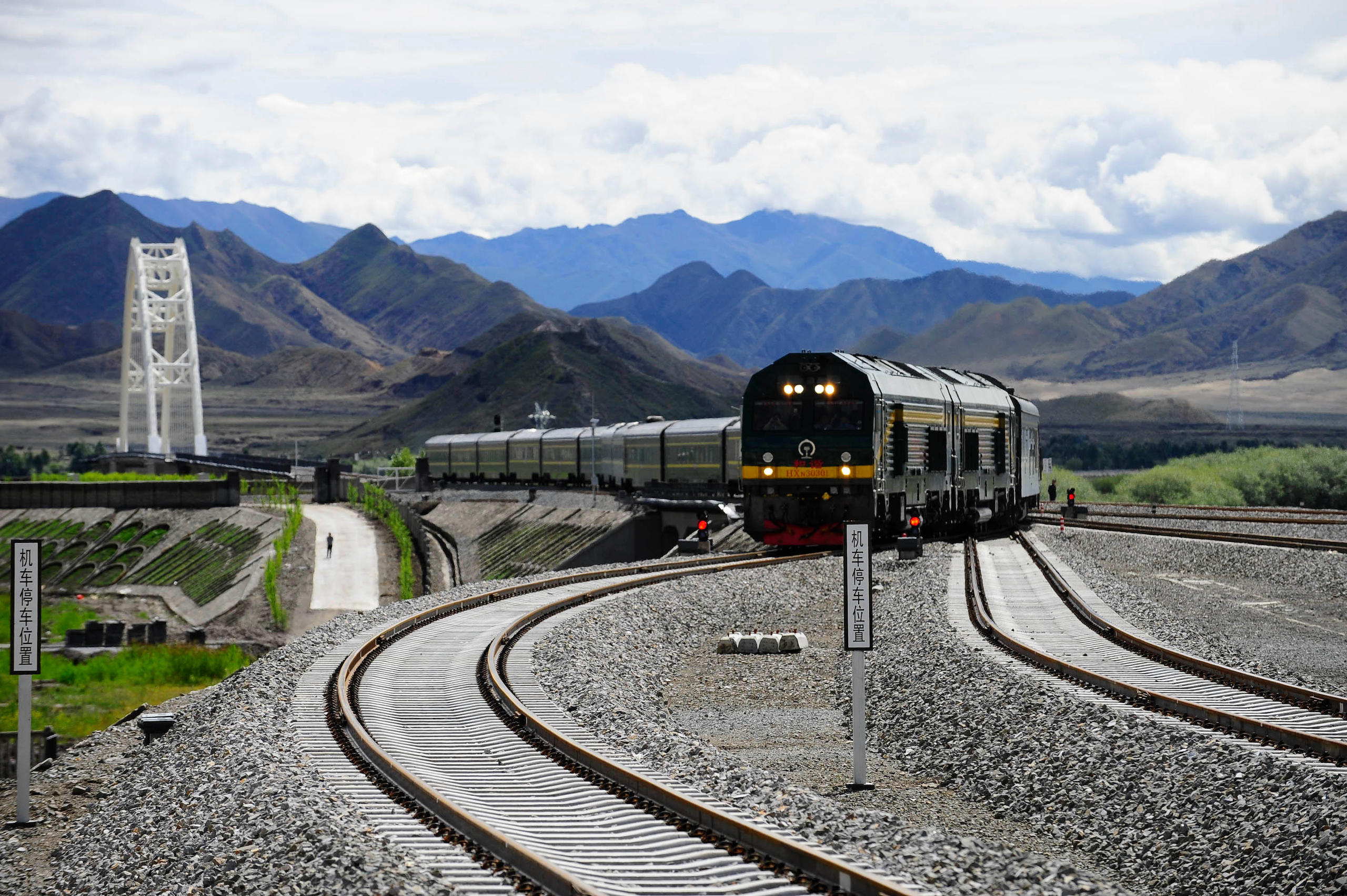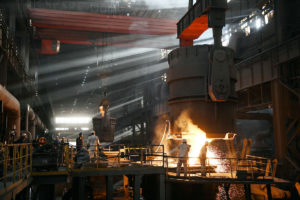On 10 August, China announced that within a year it will start a feasibility study for the ambitious Tibet-Nepal Railway project. The announcement, which came during Nepal foreign minister Narayan Khadka’s visit to China, also revealed that China will pay for the study.
The proposed 170-kilometre railway, part of the Belt and Road Initiative (BRI), will link Kerung in southern Tibet to Nepal’s capital Kathmandu, entering Nepal in Rasuwa district. The plan is to eventually extend the railway to India.
People familiar with the matter told The Third Pole that building the railway from Kerung to Kathmandu would cost about 38 billion yuan (USD 5.5 billion), almost equal to total government revenues for the country in 2018. Although only one-third of the total length falls on the Nepal side, this stretch would account for almost half of the costs due to the difficult geology and climate.
The estimated cost of the feasibility study has not been made public, but China has announced that it will provide RMB 800 million (USD 118 million) to Nepal in 2022.
Experts say this could be a defining move for the Tibet-Nepal Railway, which has been on hold for years with Nepal reluctant to fund the study and China reticent about funding it. “The feasibility study will do two important things: first it will determine the route, including ground and bridge proportion. And second, [it will determine] the type of railway that needs to be built – high speed or slow,” said Paribesh Parajuli, an engineer who worked as a consultant at the Department of Railways until 2019.
In late 2018, China prepared a pre-feasibility study of the railway for Nepal. It estimated the cost of the 72.5 km section in Nepal at USD 2.75 billion. The report, which is not yet publicly available, suggested it was an extremely difficult project, but not impossible.
“Technically this will be one of the world’s toughest railways to construct as it needs to cross the lofty and fragile Himalayan range, but with China’s technological prowess it is possible as they have already built railways in higher altitudes in Tibet than the proposed Nepal-China railway,” said Aman Chitrakar, spokesperson for Nepal’s Department of Railways. He added that the pre-feasibility study was carried out just by a Chinese team as Nepal lacks capacity to carry out any technical works on railways. The same will happen with the feasibility study. “It’s their money and their expertise will be key, but we hope to be consulted during the study,” he said.

But some worry about Nepal’s lack of ability to even review technical reports as it does not have railway engineers. The department established a decade ago is dominated by road engineers. “It was OK to rely fully on the Chinese for a pre-feasibility study as it was more of a kind of survey, but the feasibility study is a key project document if it’s going to be implemented, and Nepal must have serious eyes on it,” said Paribesh Parajuli, who is among handful of railways engineers in the country – none of whom work for the government.
Nepal, which built its first railway in 1927 near its border with India, had no railway department until 2011 and is yet to hire railway engineers to staff the department.
In 2018 – the same year as the pre-feasibility study – the Nepal Department of Railways and China Railway signed a memorandum of understanding to foster cooperation, according to Chitrakar. But the Department of Railways was not informed by its own foreign ministry about any developments during China’s foreign minister Wang Yi’s visit in March and Nepal’s foreign minister’s visit in August. “We heard that our government had signed a memorandum of understanding on technical schemes of the railway project during Wang Yi’s visit in March and now media reports have said a feasibility study will be carried out, but as an implementing agency we haven’t been informed about any developments that were made in the recent months,” said Chitrakar.
Geopolitics over geology
The Tibet-Nepal Railway project has deep roots. In 2020, China’s former ambassador to Nepal Qiu Guohong wrote in a Nepali newspaper: “Our great leader Mao Zedong was the one who sowed the seeds of the Nepal-China railway dream. During Nepal’s late King Birendra Shah’s visit to China in 1973, Mao had mentioned Qinghai Tibet railway. Even during that time Mao had thought about linking Tibet railway to Kathmandu in Nepal as he was a visionary.”
In 2016, China signed a transit and transport agreement with Nepal when KP Oli, Nepal’s former prime minister, visited China in the aftermath of a trade blockade imposed by India because New Delhi disagreed with some clauses in Nepal’s new constitution. Two years later, the railway was a key agenda item when China’s President Xi Jinping visited Nepal. This March, China’s foreign minister Wang Yi visited Nepal to reiterate China’s interest in the railway project and four months later made the announcement in support of the feasibility study.
“For several reasons, India has been suspicious and over-sensitive over the China-Nepal railway, but it is both China and Nepal’s responsibility to convince India on the railway’s importance to link India and China and its mutual benefit for the region as Nepal is at best a geography that links mainland China and the South Asian subcontinent. So, if we can connect China’s railway network with India’s railway network then this could be an important transit point for the region,” former ambassador Qiu wrote in 2020.
Unlike Nepal, India is not a BRI host country. “Greater Chinese influence in Nepal is not a bilateral or regional issue but a global one,” said Constantino Xavier, fellow in foreign policy and security studies at think tank the Centre for Social and Economic Progress, speaking at a recent webinar organised by the New Delhi-based Institute of Chinese Studies. “India should be able to calculate its relations with global powers rather than just looking to Nepal-China relations or China’s presence in Nepal.”
In recent weeks, the cross-border railway project has been covered by Chinese media and elicited responses on Chinese social media. It has been cited as an important geopolitical project that China may use according to its needs. A commentary piece published by Caijing Magazine’s WeChat channel suggested that a rail link through Nepal to India could both “enhance China-India economic bonds when geopolitical tensions are at ease” and “increase China’s strategic manoeuvring space when tensions are on the rise”.
No mention of Tibet-Nepal Railway’s ecological impacts
The ecological impacts of the proposed rail line are not being discussed in Nepal – and nothing has been said about what China’s 2021 green development guidelines might mean for the project. Some experts say this is due to the Nepali government’s inability to work with the Chinese team.
“Any trans-Himalayan project of this scale will have serious environmental impacts and there should be more concern around the fragile geology of the region. This railway will pass through the main central thrust – a geologically weak zone in the Himalayas – and it’s important to use technical knowledge of geologists and other experts to minimise its environmental impacts. But it’s sad that no efforts towards this have been made,” Basanta Raj Adhikari, deputy director of the Centre for Disaster Studies at the Institute of Engineering, Tribhuvan University in Kathmandu, told The Third Pole.
This railway will pass through the main central thrust – a geologically weak zone in the HimalayasBasanta Raj Adhikari, Centre for Disaster Studies at Tribhuvan University
In China, some concerns have been expressed over the ecological impacts of the railway. “At a time when we are enduring extreme heat, many are concerned with the railway’s ecological impact on the world’s water tower,” says one comment on Caijing Magazine’s WeChat channel. “Railway maintenance is going to be very challenging in the Himalaya region. International relationships also depend on how we choose to act. Be cautious,” says another.
Promises for future, but uncertainties at ground level
The Chinese government is encouraging Nepal to export more to China. From 1 September, 98% of Nepali products were eligible for zero-tariff export to China. “This will support the Nepalese side to make good use of this policy dividend to expand exports to China,” said a communique after the meeting of the two foreign ministers in Qingdao last August.
Nepal imported goods worth 211 billion Nepali rupees (USD 1.7 billion) from China between mid-July 2021 and mid-April 2022, according to Nepal’s Department of Customs. In contrast, Nepal’s exports to China were 622 million Nepali rupees (USD 5 million) in this period.
Chinese media has expressed hope that Nepal can export more. “The cross-border railway project, if eventually built, would surely augur well for Nepal’s economy, as the landlocked country’s transport connectivity with China currently relies on a few land ports that can’t operate amid heavy snow or geologic disasters,” Long Xingchun, president of the Chengdu Institute of World Affairs, told the Global Times.
The only functional Nepal-China road in Rasuwa Gadhi, northwest of Kathmandu, has been closed since early August and has had very little trade transit since the Covid-19 pandemic started. “The Chinese side used to arrange transport of up to 14 containers per day to the border point and containers on Nepal side used to carry goods to Kathmandu. But it has been weeks since it is completely off,” said Anu Acharya, a journalist based in Rasuwa district bordering Tibet.









